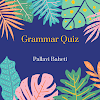Dalit literature and the Dalit movement
Dalit literature is the literature in which the Dalit himself expresses his own anguish and depict the essence of living life as one. It it is the literature of lived experiences. It is also called as mass literature or literature of action .
It raises question about the status and situation of the Dalits. Dalit literature is also considered to be a scientific, meaningful and sensitive intervention in the world of letters .Dalit literature is the literature that is scientific and free of the givens of tradition. It has been seen as the face of revolution.
Dalit literature puts a human at its center, registers a strong protest against the frames of cast , race and tribe, believes in human liberty.
There are many critics who trace a long history of Dalit literature. They see the seeds of a Dalit consciousness in the poetry and songs of saints and devotional poets.The poem of Hira Dom is the first Dalit piece of writing. Swami Achyutanand's social movement and writings are considered revealing a given oppressive social structure. Raidas , a cobbler Kabir , a weaver and Tukaram , a tanner are considered with the Bhakti movement that allowed for reforms at least in thought if not in social organization. These saints sought personal redemption in devotion to what are primary Hindu Gods and spirituality .These are the first recorded voice of the lower castes ,they are seen to have been co opted in to the dominant vision of the Prevailing religion that embrace Hindu deities.
Dr Babasaheb Ambedkar and Jotirao Phule shaped the modern Dalit consciousness. The realm of the social and political in the case of Dalit literature is linked with its anesthetic and works towards the the construction of a cannon. On 14 October 1956 Dr Ambedkar renounced the Hindu religion and converted to Buddhism. He took 22 vows on the occasion that has become the cultural belief of Dalit literature today. Dalit consciousness derives its energy from Dr Ambedkar's world view and philosophy.







0 Comments